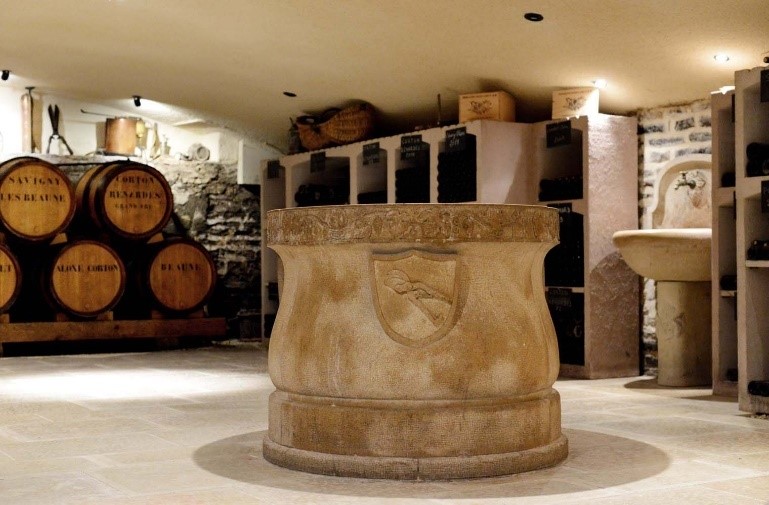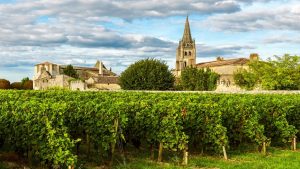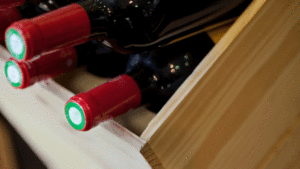
The Maillard family has been part of Burgundy’s viticultural scene since 1766. In 1952, Daniel Maillard, father to Pascal, decided to dedicate himself to this career, concentrating on enlarging the domain and growing cuvées in a way that respects the terroir and the soil. A judicious decision considering the results we see today…
Pascal’s father founded Domaine Maillard in 1952. A native of Ladoix-Serrigny, a village located between the fine reds of the Côte de Nuits and the delicious whites of the Côte de Beaune, Daniel Maillard comes from a family that has been part of Burgundy’s wine making industry since 1766. His ancestors were well-practised in polyculture, combining work in the vines with that of the fields and animals. When Daniel chose to dedicate his life to the vineyard, his land covered just 2 hectares. Over time and with much hard work, the domain grew, and more and more fields classed in appellations were planted with vines. Daniel had two children: Alain, who retired in 2015, and Pascal who currently runs the domain in Chorey-les-Beaune. Pascal came to the domain in 1988 after attending he Beaune viticultural school and undertaking work experience in various Burgundy domains. His son, Jules, is 17 and currently studying at the same school, so it goes without saying that there’s promise here! He is playing an increasingly important role in the running of the domain. “Have you seen that we produce white Beaune? One day, when Jules was just 13, we were pulling up the Beaune vines and he managed to convince me to replant with Chardonnay, whilst it was his great grandfather who had made the decision to grow Pinot Noir. I remember it like it was yesterday, the 17th March 2016 saw the replanting of the vines with white. This wine is simply marvellous, a veritable bouquet of white flowers, exceptional aromatics and length on the palate. The signature features of the terroir come together with the mark of the new generation.”
The 19 hectares of vines are shared between the communes of Aloxe-Corton, Pommard, Beaune, Ladoix-Serrigny, Chorey-les-Beaune, Meursault, Volnay and Savigny-les-Beaune. As well as Pascal and his son, there are 6 other people working at the domain; 5 for the vineyards themselves and 1 for administrative tasks. One of the key ideas in the vineyard is to space out the vegetation, allowing the wind to pass through and avoiding an overcrowded harvest. Even if they haven’t received certification yet, much of the work is done in the spirit of biodynamics, with no treatments used on the vines unless strictly necessary. “We’ve always been interested in environmental issues like reducing the quantity of products used, choosing the less pollutive ones, treatments that affect only the plant.”
Burgundy is a relatively humid region at times, meaning that the vines are more susceptible to blight. By separating the vines out in the vineyard and shaping them in a certain way, they avoid overwhelming the root stock, making the plants healthier and less likely to rot. Th rhythm of the work follows the lunar calendar. The grapes are harvested by hand, with the best bunches collected in small, 40-litre cases in order to guarantee the quality of the fruit upon its arrival at the winery. Pascal is committed to retaining traditional methods from vinification to maturation. Once they’ve been sorted, the grapes are destemmed (the reds in part, but never the whites). The white grapes are pressed in a pneumatic press and placed directly in oak barrels for alcoholic fermentation. The reds are put in vats for 12-15 days with stirring sessions once or twice per day. The juice is matured in 228-litre vats for the reds (with 25-50% new wood) and 350-litre containers for the whites (25% new wood). This process takes 12 months.
If you ever get the chance to go to the Maillard estate in Chorey-les-Beaune, you’ll be able to put your glass down on the well that serves as a tasting table. This beautiful, stone structure is a memorable feature of the domain for all the visitors who go there. When it came to renovating the room, questions were asked about whether it might be best to cover the well or good. “No! I decided to make it into a tasting table! I got a local artisan to craft it, and the symbols represent the tools of the wine maker: the billhook and the secateurs.”



